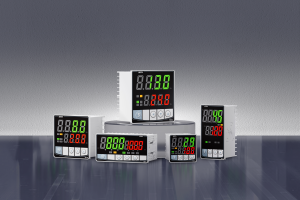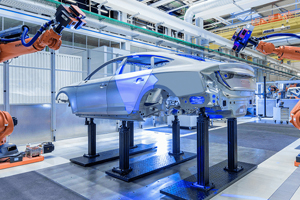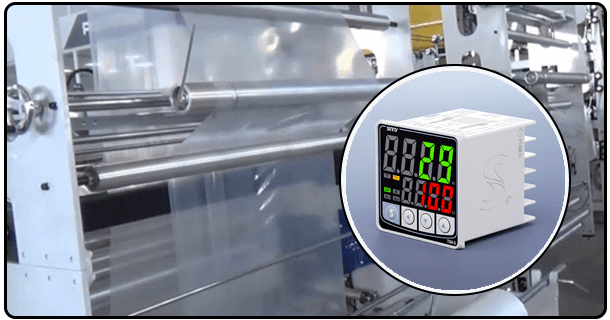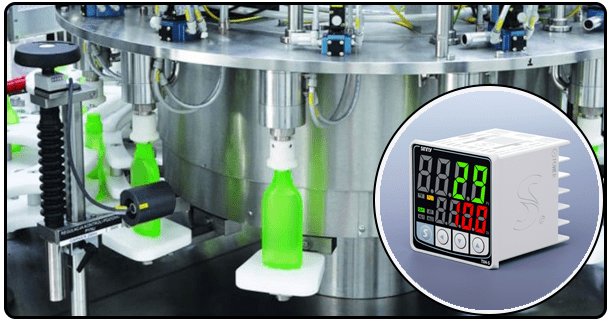Explore the basics of PID Temperature Controllers and how they function
1. Introduction* A. Introduction* A.
* B. A Precision PID Controller: Introducing the Technology
What is the significance of temperature controllers?
2. Basics of PID temperature controllers
* A. The PID Algorithm: Understanding Proportional Integral Derivative
* B. The PID temperature controller's core components
* 1. This is where accuracy begins: The sensing element
* The Iterative process: achieving and maintaining setpoint
Different applications are where PID temperature controllers excel:
* A. Industrial applications: Ensure consistency and efficiency
* 1. HVAC and Refrigeration Systems
* 2. Processes for Food and Beverage
* 3. Chemical Manufacturing and Petrochemicals
* B. Scientific Research and Laboratory Environments
* 1. Calibration and Testing Devices
* 2. Environment Simulations
Consumer applications: everyday precision
* 1. Home Refrigeration & Air Conditioning
* 2. * 2.
4. What are the advantages of PID over other methods? The Key Benefits
The highest level of precision and accuracy
* B. Rapid response and stability
Energy Efficiency and Cost Savings
* D. Robustness and Adaptability
V. The Selection of the Correct PID Temperature Control
* A. Important Factors To Consider
* 1. * 1.
* 2. * 2.
* 3. * 3.
* 4. * 4.
* B. Navigating Available Technologies (Analog vs. Digital)
Brand Reputation & Model Considerations
5. Maintaining Longevity - Maintenance and troubleshooting
* A. Recommended Maintenance Practices
* B. Common issues and effective troubleshooting steps
Know When to Hire Professional Support
VII. Conclusions: PID Technology's Enduring Relevance
Article Content:
I. I. Introduction
A. Temperature control is ubiquitous and important.
The temperature is a physical property that governs many processes, both in the natural world as well as engineered systems. The control of temperature is crucial in many industries. It affects everything from food safety to complex machinery. It is important to maintain specific temperatures ranges in order to preserve product quality and ensure operational safety. This also optimizes efficiency. Modern technology and manufacturing cannot function without the capability to precisely manage heat. Failing to manage heat accurately can lead to significant financial loss, equipment damage, and even serious safety risks.
B. Precision is the key to PID controllers.
The PID algorithm uses this difference (also known as error) to calculate the corrective actions. PID's elegance lies in the ability it has to deal with dynamic disturbances and changes. It aims to keep target temperatures within a small deviation. PID is the basis of automation in many applications that require accuracy and response.
C. What is the significance of temperature controllers?
The PID controller adapts the PID universal algorithm specifically to thermal management's unique needs. The controller uses sensors to measure the temperature and a processor to calculate the control signals using PID logic. It then employs a valve, heater or cooler to adjust the system's thermal input. These controllers are a must-have for their accuracy, reliability, and flexibility. These controllers are preferred in situations where accurate, automated temperature regulation, as well as improved product quality and cost-savings, is required. Anyone involved with thermal management or process control must understand how PID controllers work and select the best one for their application.
6. Basics of PID temperature controllers
A. The PID Algorithm in Detail: Derivative, Proportional and Integral
The PID algorithm is at the core of any PID controller. The PID algorithm is based on three terms that each contribute to the corrective action differently.
Control (P) Proportional: This is a term that generates an output whose strength directly relates to the error value. The difference between the setpoint temperature desired and the temperature actually measured. A larger error results in a stronger control signal. This term is used to provide an initial, immediate response that tries to minimize the error. A purely proportional reaction can lead to steady-state errors, where the system may not reach its exact setpoint but will oscillate about it.
Integral Control (I): This integral term is used to correct the error in steady state left by the proportional control. The control term calculates the sum over time of all the errors and produces a output which increases or decreases as long as there is an error, regardless of size. The steady state error is slowly eliminated by this term, which pushes the system toward the setpoint. If the integral term used is excessively aggressive, the system can overshoot its target temperature or oscillate.
Control (D) Derivative: The term is based on the change rate in the error. The control is based on the rate of change in the error. It acts as a damping term, helping to predict future errors by using the current trend. This helps prevent oscillations and overshooting. This improves system stability and responsiveness during sudden changes of load or setpoint.
Combining these terms, Proportional Integral and Derivative, the PID Controller can produce a subtle and effective signal which adapts to system behaviour, and quickly brings temperature to desired setpoint, while maintaining stability.
B. The Core Components in a PID Controller
The key components of a functional PID system are several that work together.
1. It all starts with the Sensing Elements
It is the sensing element that measures actual temperature. The controller's performance is dependent on its accuracy and reliability. Types include:
Thermocouples Used widely due to the wide temperature range they cover, their durability and low price. The voltage produced by two metals contacting each other is what they use to operate.
Resistivity Temperature Detectors: Provide higher accuracy, particularly at specific temperatures. These devices consist of wires or films with resistivity changes that are predictable with temperature.
Thermistors Offer very high accuracy in a particular temperature range. They are typically smaller than RTDs or thermocouples, with more resistance per degree Celsius.
The selection of a sensor is based on factors such as the temperature range required, the accuracy needed, the response time and the environmental conditions.
2. The Control Unit is the brain behind any operation
It is the main processing unit that performs the PID calculation. The central processing unit receives temperature signals from sensors, compares them to setpoints, calculates PID terms and outputs the control signal.
Analog controllers: Use electronic circuits, often op amps to calculate PID. These controllers are less complex and less expensive, but they offer less precision and flexibility than digital ones.
Digital controllers: Calculations are performed by microprocessors and microcontrollers. These controllers offer greater flexibility and precision (e.g. setting different PID gain, switching modes), as well as programmability, remote connectivity, historical data storage, and a higher level of flexibility. Due to the superior features and performance of digital controllers, they are becoming more common in many applications.
3. The Control Action: Implementation of the Actuator
The actuator takes the signal sent by the controller, and converts it to a physical act that changes the temperature of the process. Depending on the purpose of the actuator, it can be used to either heat or cool a medium, as well as regulate its flow.
Heaters: Usually resistive components that emit heat as electrical energy passes through. These elements can be switched by triacs, solid state relays, or other switching devices based on controller output.
Cooling devices: Could be vapor-compression system, chilled water coils, or liquid Nitrogen tanks depending on the application. The control could involve the switching of compressors, valves or flowmeters.
Valves Control the flow or liquids and gases. For example, adjusting hot or cold flow to an element for heating or cooling or regulating the gas flow within a furnace.
C. The Iterative Method: Achieving and maintaining Setpoint
Iteratively, the operation of PID controllers is a continuous process.
Temperature measurement: A sensor measures continuously the temperature of the air and transmits the information to the controller.
Comparison When comparing the temperature measured (Process variable - PV), to the target temperature desired (Setpoint (SP)), the controller calculates the error. (E = PV - SP).
Calculation PID algorithms process the error using the Proportional Integral and Derivative Gains (Kp Ki Kd). The control signal is then generated.
Actuation The control sends a signal of output to the actuator.
Effect Actuator performs action.
Feedback Process temperature is affected by the activation.
Repetition: The steps 1-6 are repeated continuously with the controller adjusting the actuator in order to reduce the error. The system will seek a dynamic equilibrium in which the change rate is low and error close to zero.
7I. Different applications are where PID temperature controllers excel:
PID controllers are indispensable for a wide range of applications due to their versatility and efficiency.
A. Industrial Applications: Ensure Consistency and Efficient
In industrial environments, where stability and efficiency of processes are important, PID controllers play a fundamental role.
2. In the food and beverage processing industry, consistency is essential. The PID controller controls ovens and dryers as well as freezers and pasteurizers. This ensures that products are produced to meet safety, quality and texture requirements. PID controllers control temperatures and cooking times precisely. They maintain the cold chain during transportation and storage and guarantee consistent product qualities batch after batch.
3. Chemical Manufacturing, petrochemicals and other industries that involve highly complex processes and reactions are often sensitive to temperature. PID controllers control reactors, heaters, distillation column, and mixing tank. Temperature control precision is crucial for reaction rates and yields, as well as product purity. It also helps to prevent dangerous thermal runaway.
B. Scientific Research and Laboratory Environments
In scientific research accuracy and reproducibility is paramount, so PID controllers are essential.
1. Equipment for Calibration, Testing and Material Properties: PID controllers are used to maintain a stable temperature in instruments such as dry baths that calibrate thermometers and environmental chambers which test material properties at specific temperatures. Incubators for biological samples also rely on these controllers.
2. Environment Simulations: For research that requires specific temperatures profiles (such as in weather simulations or materials testing under extreme conditions), sophisticated PID-controlled system are used to reproduce and maintain the profiles.
C. C.
Many household appliances have PID controllers, which are often not visible to end users, but contribute to their performance and efficiency.
1. Home Refrigeration and AC: Many modern refrigerators and air conditioning systems use PID control algorithms to regulate compressors and fan speeds, which maintain desired temperatures much more effectively and smoothly than old thermostats.
2. Advanced Heating and Cooking Appliances : High-end microwaves and ovens use PID temperature control to achieve better results in cooking, quicker heating and more consistent performance.
IV. What are the advantages of PID over other methods? The Key Benefits
There are several advantages to PID control over simpler methods such as on/off and two-stage controls.
A. A.
The PID controller can maintain a process temperature that is very close to its setpoint and achieve very narrow control bands. It is important to use the integral term in order to eliminate steady state errors, which plague simple systems. This will ensure that the system reaches the temperature setpoint and maintains it.
B. B.
This derivative term allows the system to react more quickly and effectively to disturbances. It also dampens out any oscillations which can be caused by systems that are faster. The system will respond with a controlled and stable response. This prevents excessive overshooting, and ensures the system returns to the original setpoint as soon as disturbances are removed.
C. Energy Efficiency and Cost Savings
PID controllers reduce energy waste by maintaining temperatures very accurately. The heating and cooling systems are run more efficiently and smoothly than with systems that rapidly cycle between on/off states. This results in significant energy savings as well as reduced operating costs.
It is an effective control strategy which can be adjusted (via the gains Kp, Ki and Kd) in order to deal with a variety of disturbances. The PID algorithm can be adapted to changing load conditions or external factors, which makes it suitable for non-linear and complex thermal systems.
8. The Selection of the Correct PID Temperature Control
To ensure optimal performance and compatibility, it is important to carefully consider several factors when choosing the best PID controller.
1. Temperature range requirements: Sensors and actuators (controller and components) should be able to withstand the temperatures that the application is likely to encounter.
2. Decide on the desired accuracy and resolution. For a high-precision lab application, a controller that is more expensive and sophisticated will be needed than for a simple industrial process.
3. Integrity Needs: (Controlled devices ):) The controller should be able interface with the system or device it is going to control (e.g. heating element, chilled, valve). Take into account voltage/current needs and communication protocols.
4. Environment Conditions: It is important that the controller can operate in the desired environment. (Temperature, humidity, vibrations, and corrosive environments).
5. Safety Features: Depending upon the application, you should look for controllers that have essential safety features such as high temperature alarms, safety interlocks or conformance with safety standards.
B. Navigating Available Technologies (Analog vs. Digital)
Analog controllers: Best for simple applications, with well understood process dynamics and where cost is the primary concern. These controllers are not as flexible, and have limited diagnostic abilities.
Digital controllers: These are the preferred digital controllers for modern applications because of their accuracy, flexibility and programmability. They also offer connectivity and diagnostic options. These controllers allow easier data recording, tuning and integration with larger automation systems.
. Considerations for Brand Image and Model
Search for reputable companies that are known to provide quality control. Compare models on the basis of features, documentation and technical support. It can be helpful to read reviews and consult with experts.
VI. Maintenance and troubleshooting: Ensure Longevity
For a long-term, reliable performance of the PID system it is important to perform regular maintenance.
To ensure accurate temperature readings, inspect and clean your sensor regularly. Look for wear or damage.
Check the wiring connections and integrity between the sensor and controller.
To ensure that measurement accuracy is within specification, calibrate the sensor and controller according to manufacturer's instructions.
Update the software on your controller if you have a digital device.
Watch for any signs of instability or drift in the performance.
B. Problems that are common and effective troubleshooting steps
Unreliable Temperature reading: Check sensor wiring and sensor integrity. Check controller input and setpoint configuration.
Excessive hunting (System Oscillating): Often indicates aggressive tuning of PID. If you are using integral control, try reducing Proportional Gain (Kp) and adding Integral Time. Look for mechanical resonances in the control system.
Incorrect or no response from the actuator: Verify the power supply for the controller and the actuator. Verify the wiring connections. Verify the wiring connections.
Error messages: Refer to the manual of your controller for more information on specific error codes. Communication failures, sensor errors, and configuration mistakes are all common causes.
C. Know When to Hire Professional Support
It is best to contact a technician who has the necessary training or the technical support staff of the manufacturer if troubleshooting attempts fail or if there are complex processes that could be dangerous. Repairing complex electronic systems can be hazardous and cause further damage if you do not have the right expertise.
- A simple way to improve precision for every application
- Understanding PID water temperature controller























